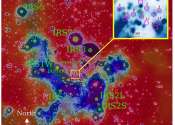A black hole of inexplicable mass: JWST observations reveal a mature quasar at cosmic dawn
The James Webb Space Telescope observed a galaxy in a particularly young stage of the universe. Looking back into the past, it became clear that the light from the galaxy called J1120+0641 took almost as long to reach Earth ...









